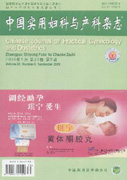Fallopian-tubal diseases are not rare in clinical practise that not only damage the fertility of female,but also are lethal under certain circumstances.Hence OBGYN doctors should gain an insight into the anatomy related to the fallopian tube.Here we discuss the current status of the anatomical research on fallopian tube and introduce its correlation with the vascular supply of the ovary.

